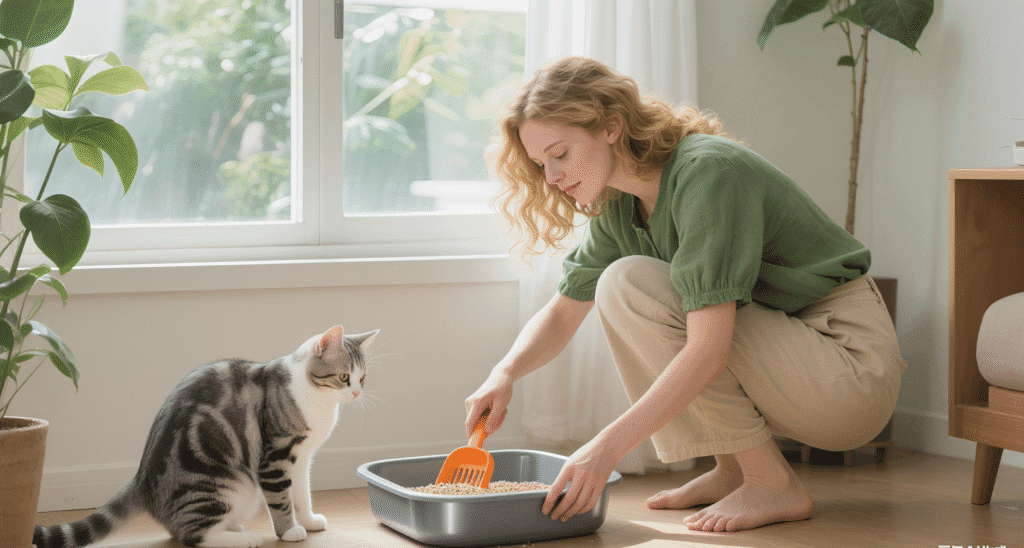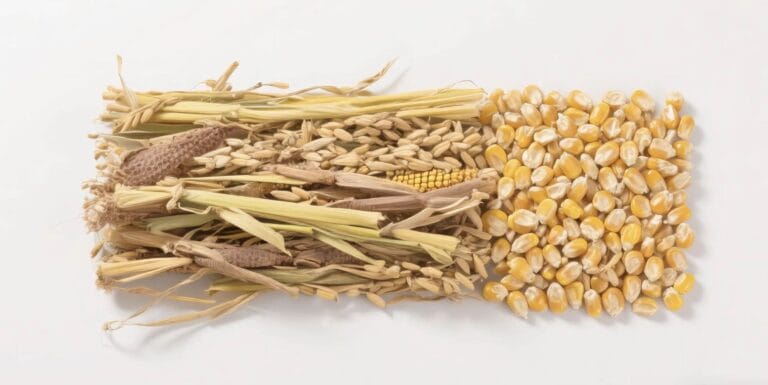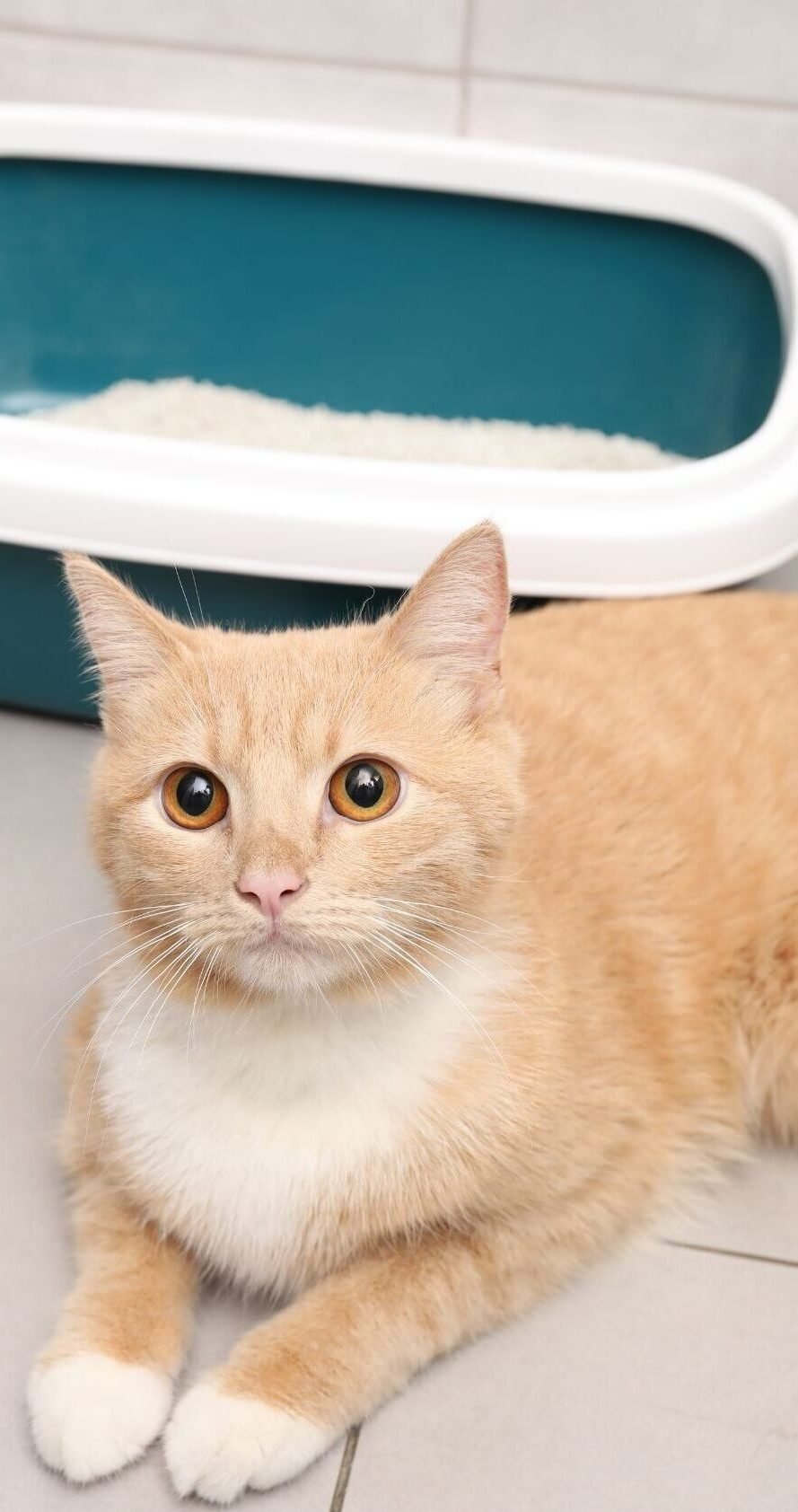As pet parents, we all want the best for our feline friends, and increasingly, we’re looking for ways to reduce our environmental footprint. That’s why the question often arises: How do I choose the right eco-friendly cat litter for my cat? It’s a fantastic question, and one I’m passionate about. Making the switch to a sustainable litter benefits not just the planet, but also your cat’s health and your home environment.
At Qingke, we’ve dedicated ourselves to developing high-quality, eco-certified cat litter solutions. Through extensive research and our commitment to sustainability, I’m here to share my expertise to help you navigate the world of eco-friendly cat litter and make the best choice for your beloved companion.
Key Considerations When Selecting Eco-Friendly Cat Litter
When exploring the myriad of eco-friendly options, it’s crucial to consider several factors to ensure you find a litter that suits both your cat’s preferences and your household needs.
Material Composition
The foundation of any eco-friendly cat litter lies in its material. Unlike traditional clay and silica litters, which are often obtained through environmentally damaging strip mining and are non-biodegradable, eco-friendly litters are typically made from renewable or recycled natural materials. These include wood, paper, corn, wheat, walnut shells, pine, and even cassava. These materials are biodegradable, and often compostable, offering a significant environmental advantage. At Qingke, for instance, our litter is made from 85% upcycled crops, significantly reducing the carbon footprint by 60% compared to conventional clay litter.
Odor Control and Clumping Ability
Effective odor control and strong clumping are vital for a clean and fresh litter box. Many plant-based litters utilize natural enzymes or fibers to absorb odors and form solid clumps. For example, some wood-based litters like Ökocat use enzymes for effective odor control and maintain good clumping for easy scooping.The Spruce Pets Eco-Friendly Litters Corn-based options, such as Sustainably Yours, are also celebrated for their superior clumping and excellent odor management.
Absorbency
A litter’s absorbency directly impacts how long it lasts and how often you need to refill the box. Recycled paper litters can be up to three times more absorbent than clay, leading to fewer changes and less waste. Corn, wheat, and wood litters also offer high absorbency, ensuring efficient moisture management. At Qingke, our litter boasts an impressive 400% absorption rate, outperforming traditional tofu litter (350%) and clay, which can reduce your refill costs by up to 20%.
Dust and Tracking
High dust levels can be irritating for both cats and humans, potentially leading to respiratory issues. Look for low-dust formulas. While larger particles, often found in some wood-based litters, can reduce tracking outside the litter box, they might require a scoop with wider slots.
Scent and Additives
Artificial fragrances, dyes, and chemicals can be highly irritating or even harmful to cats. High-quality eco-friendly litters are generally free of these additives. Many have a mild, natural scent, like the faint woodsy aroma of certain wood fiber-based litters, which cats typically tolerate well. It’s always best to choose unscented or naturally scented options.
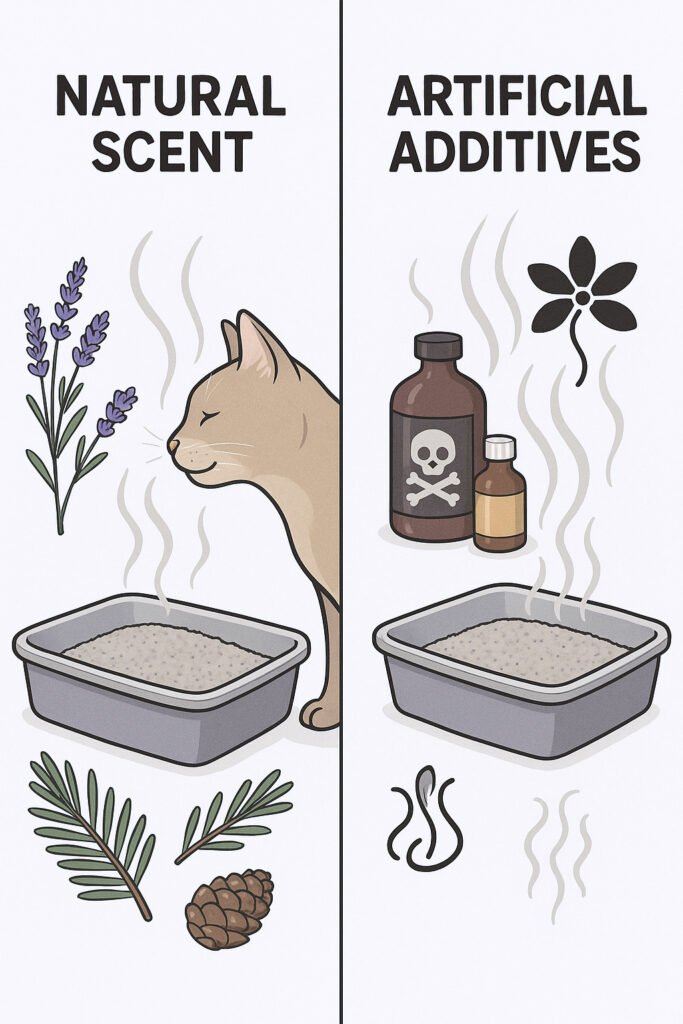
Multi-Cat Suitability
If you have multiple cats, you know the challenge of maintaining freshness. Some natural litters are specifically designed for multi-cat homes, providing excellent odor control and maintaining clumping integrity even in high-traffic situations.
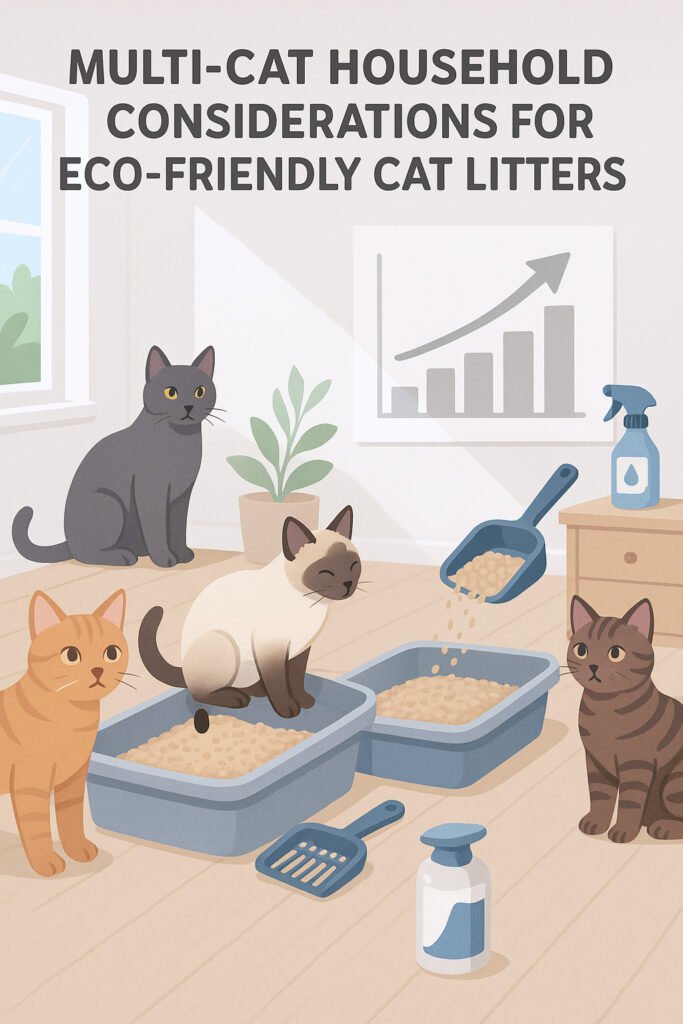
Popular Eco-Friendly Cat Litter Types and Brands
Let’s look at some common types of eco-friendly cat litter and their general characteristics:
- Wood (Crumble or Pellets): Often sustainably sourced from recycled wood products, wood litters are known for strong odor control and low dust. They are highly biodegradable and compostable. Brands like Ökocat are popular examples. While they can be very absorbent and form good clumps, some larger pellet forms might require a specialized scoop.
- Corn-Based: These litters are highly absorbent and offer excellent clumping and odor control due to their starch content. Brands such as Sustainably Yours and Nature’s Miracle Corn are well-regarded. They are fully biodegradable and often compostable, though some can track or may need slightly more frequent changing.
- Wheat-Based: Wheat litters use natural enzymes for odor neutralization and feature natural clumping properties. They are renewable and often flushable, making disposal convenient. World’s Best Cat Litter is a notable brand in this category. They are gentle on paws but can sometimes track.
- Recycled Paper: Made from recycled newspaper or other paper products, these litters are highly absorbent, soft, and virtually dust-free. Yesterday’s News is a widely recognized brand. They are excellent for cats with sensitive paws or respiratory issues and can be up to three times more absorbent than clay. However, they may not clump as tightly as other options or mask odors as effectively.
- Walnut Shells: Derived from reclaimed walnut shells, these litters offer strong odor control and good clumping. Brands like Naturally Fresh provide a sustainable, plant-based option. They are biodegradable but can sometimes be a bit dusty or leave dark residue.
- Pine: Often made from pure pine, these litters naturally leave a fresh, woodsy aroma in the litter box and are excellent for odor masking. Feline Pine is a common choice. They are lightweight and compostable, often low in dust, but not all pine litters are clumping. Some cats may also dislike the texture or strong natural scent.
Transitioning to a New Litter
Cats are creatures of habit. If your cat is accustomed to a specific type of litter, they might find a new texture or scent off-putting. Just as you would with new food, I recommend a gradual transition. Start by mixing about 2/3 of their familiar litter with 1/3 of the new eco-friendly litter. Over a week or two, gradually increase the proportion of the new litter. It’s also helpful to offer multiple litter boxes during the transition, keeping them scrupulously clean to encourage use. Always watch for any signs of aversion or allergies, especially if your cat is sensitive to certain natural ingredients.
Environmental Impact
Choosing eco-friendly cat litter is a powerful statement. Traditional clay and silica litters are non-biodegradable and have significant negative environmental impacts, including landscape damage and habitat destruction from strip mining. In contrast, plant-based and recycled litters are biodegradable and can often be composted, dramatically reducing landfill waste. This conscious choice contributes directly to a more sustainable ecological legacy, aligning with the growing trend towards products that harmonize pet care with earth stewardship.
Why Choose Qingke Pet Products?
At Qingke, we’re not just about making pet products; we’re about making a difference. As a Co-Founder and Cat Litter Expert, I’m proud of how our products meet the needs of modern pet brands and eco-conscious consumers:
- Retail-Ready Packaging: Our moisture-proof vacuum packaging, combined with sturdy cartons, ensures our litter survives global shipping, arriving in perfect condition for your customers.
- Eco-Certified Appeal: We lead with our commitment to sustainability. Made from 85% upcycled crops, our litter significantly reduces its carbon footprint by 60% compared to traditional clay litter.
- Superior Performance: With a 400% absorption rate, our litter outperforms traditional tofu litter (350%) and clay, which means less frequent refills and a 20% reduction in costs for your consumers.
- OEM/ODM Supported: We understand that every brand is unique. We support OEM/ODM services, allowing you to customize scents, branding, and bulk orders to perfectly fit your market.
Final Thoughts: Making the Right Choice for Your Cat and the Planet
Deciding how to choose the right eco-friendly cat litter for your cat involves a blend of understanding material benefits, considering your cat’s individual preferences, and recognizing your household’s specific needs. Prioritize litters that are biodegradable, low-dust, and free from harsh chemicals. Don’t hesitate to read product reviews and try a few options to see what works best for your home and your beloved feline.
At Qingke, we’re here to support your journey towards more sustainable pet care.
Ready to experience the Qingke difference?
Click the button below to receive a free sample of our high-quality cat litter. We specialize in OEM services tailored to your brand’s needs!

